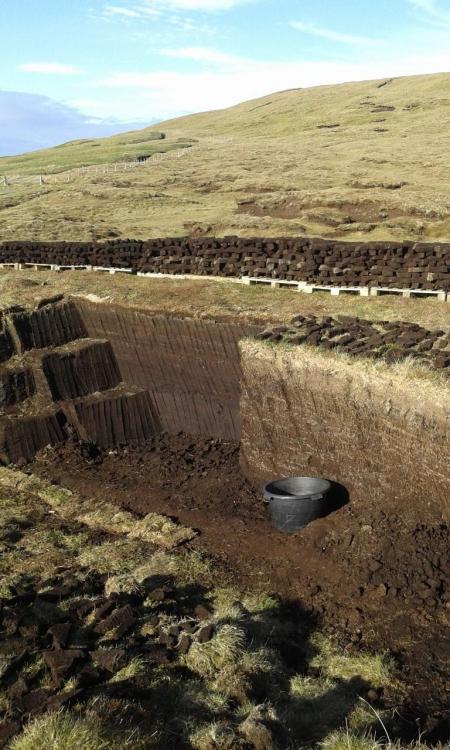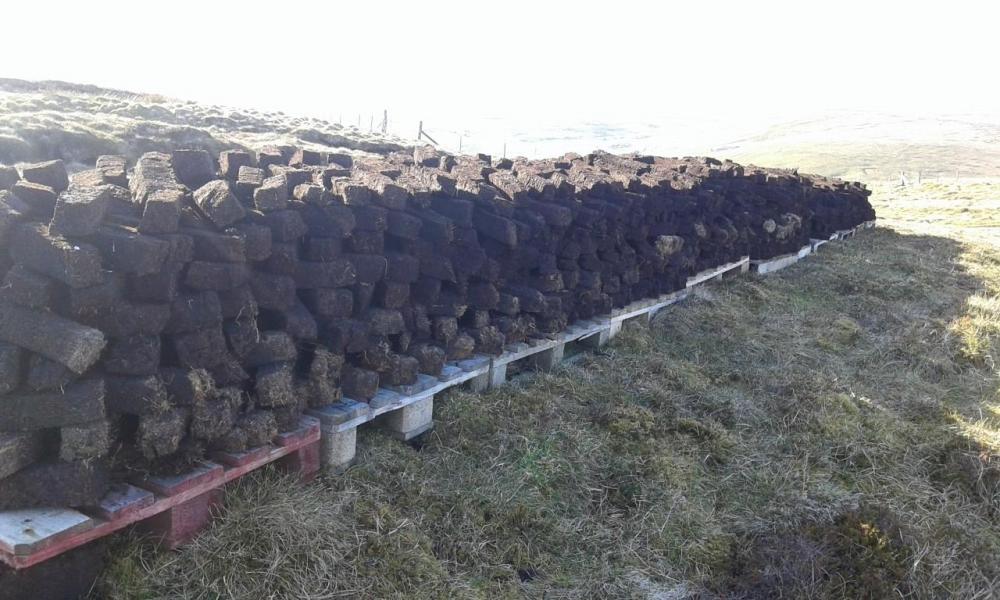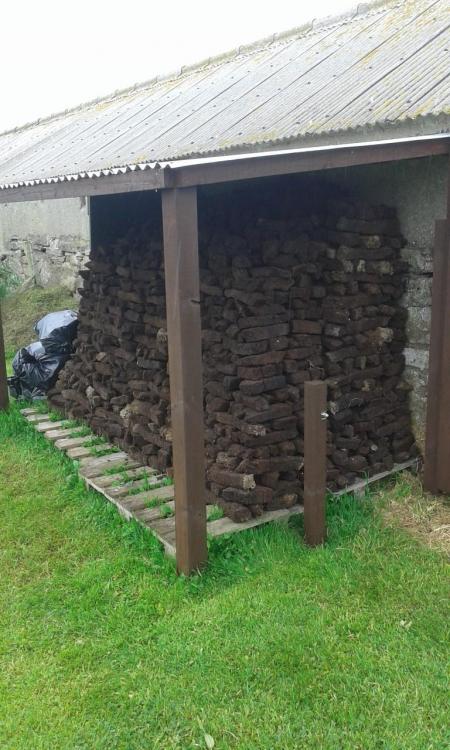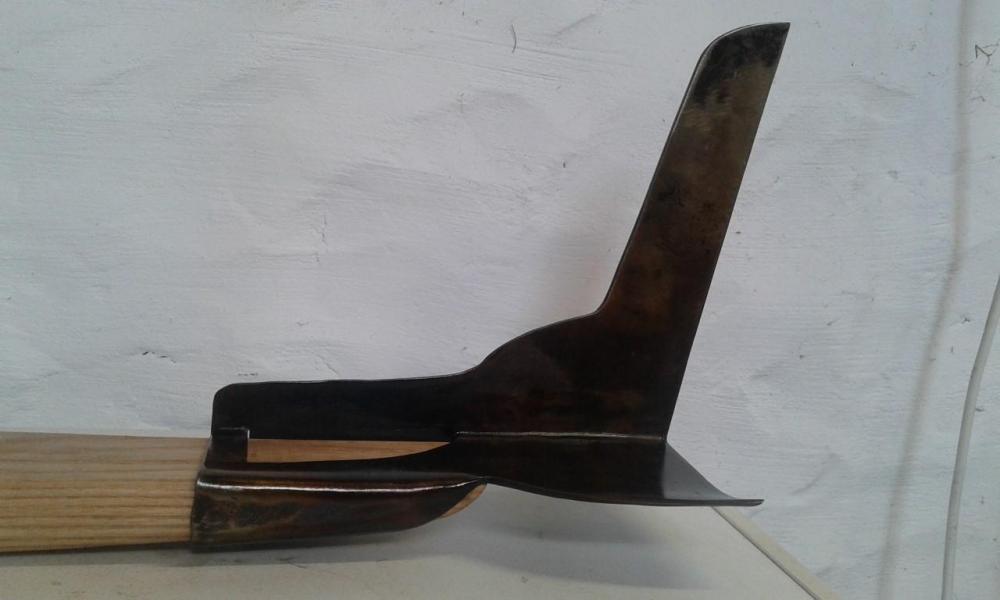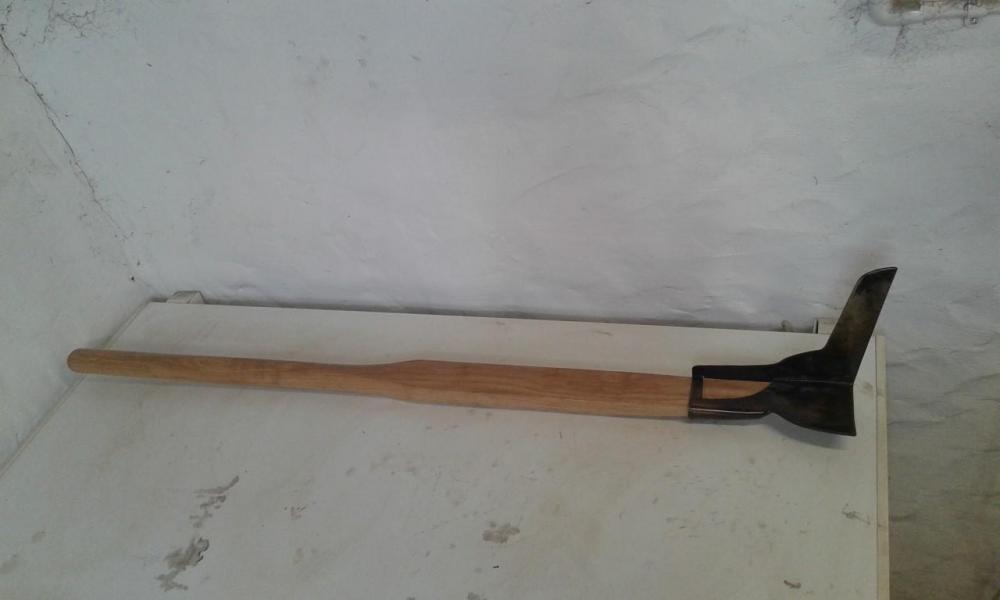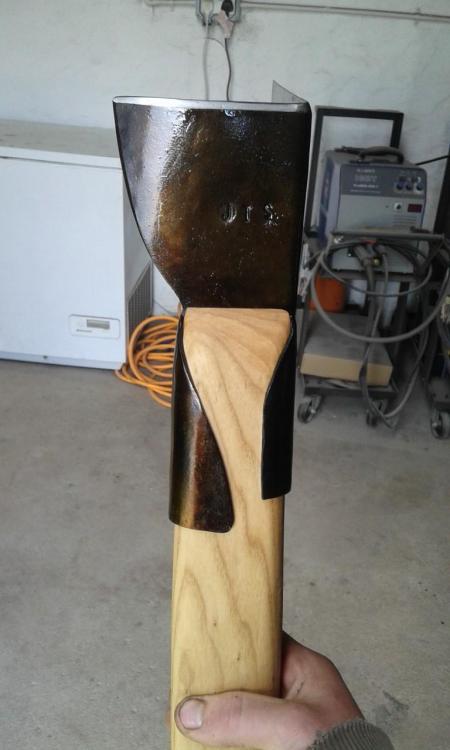-
Posts
135 -
Joined
-
Last visited
Content Type
Profiles
Forums
Articles
Gallery
Downloads
Events
Everything posted by Jonnytait
-
Welcome Norsecrafts. I dont know enough about propane forges to comment but that looks dangerous. Im sure someone here will be able to help you out. I would wait for some advice before lighting the forge again. In the meantime you should put your location on your profile. You never know, another member might be close to you and willing to help you out!
-
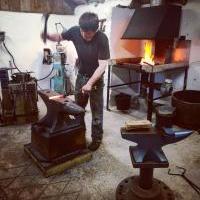
List of makers currently producing anvils
Jonnytait replied to Jonnytait's topic in Anvils, Swage Blocks, and Mandrels
Thank you Mod34 -
Very good Swedish cast steel anvil at a fair price. Nice score. Remember not to grind or sand the face. That anvil is ready to use as is
-

Making Peat Charcoal
Jonnytait replied to Jonnytait's topic in Solid Fuels: Coal, Coke, Charcoal, Wood, etc
Cant help you there Frosty, might need to ask MacLeod. No tradition of Gaelic in Shetland Shetland dialect (also variously known as Shetlandic, (broad or auld) Shetland or Shaetlan, and referred to as Modern Shetlandic Scots (MSS) by some linguists) is a dialect of Insular Scots spoken in Shetland, an archipelago to the north of mainland Scotland. It is derived from the Scots dialects brought to Shetland from the end of the fifteenth century by Lowland Scots, mainly from Fife and Lothian, with a degree of Norse influence from the Norn language, which is an extinct North Germanic language spoken on the islands until the late 18th century. -

Making Peat Charcoal
Jonnytait replied to Jonnytait's topic in Solid Fuels: Coal, Coke, Charcoal, Wood, etc
Brilliant video, thanks for sharing. Is that blacksmith called Calum MacLeod? Funny you should post a video of him, I was reading an article about him just the other day, seems like he must have been a very knowledgeable and interesting man. I agree it is interesting to see how others work their peats, different ways of doing it but the same end result. It really is the only fuel that can be locally sourced in the Northern/Western Islands, and I honestly wouldn't be surprised if sourcing coal, and even gas becomes either too expensive or just logistically impossible to get in my life time, with the way the world is at the minute, it doesn't seem too crazy to think it could happen, which is why I'm so interested in using peats as forge fuel. I suppose I am thinking long term here. Lovely photos by the way If you ever get that book back, id be interested to know if peats are mentioned. I'd also be interesting in knowing how you get on with horse manure as a fuel if you decide to give it a shot -

Making Peat Charcoal
Jonnytait replied to Jonnytait's topic in Solid Fuels: Coal, Coke, Charcoal, Wood, etc
pnut - Thanks for the input, that's the kind of thing Im looking for, different ideas etc. MacLeod - Thanks for the info and the story about your father, very interesting stuff! And I like the lamb idea, Im sure the charred peats would give it a special flavour too Our peat casting experience has been much the same as you this year, great drying weather in April so we decided to get them cut early. Has been much better weather then last year anyway! We had all of ours home and dry by mid June. Ah so you call it a Tarisgear. I have read that being used to describe a peat spade but wasn't sure which part of the country it was from. I think the Irish call it a Slane. We call it a Tushkar here. I will include some photos of one I made for a customer a few weeks back and also this years peats. Have you tried using peats in your forge yet? Or have you thought about charring peats yourself? By the way the scenery in your photo looks just like Shetland, if I didn't know otherwise I would have thought it was! Do you have any other photos of your peat bank and surrounding area? -

Making Peat Charcoal
Jonnytait replied to Jonnytait's topic in Solid Fuels: Coal, Coke, Charcoal, Wood, etc
Thanks for the responses guys, I will carry on researching charcoal and update this thread when I give making peat charcoal a shot. -

Making Peat Charcoal
Jonnytait replied to Jonnytait's topic in Solid Fuels: Coal, Coke, Charcoal, Wood, etc
Ah yes, I did come across that thread. Shame the author of the thread never came back. This is a few paragraphs from a book by Alexander Fenton called - The Northern Isles: Orkney and Shetland. 'In spite of a suggestion that there was coal in Fetlar and Unst, smiths had to work their iron with peat charcoal in earlier times. This was made from well-dried peat, of medium density, with no intermixture of earth. A pot measuring 6ft in diameter by 14 in. deep was dug in dry ground, and a layer of peats on their ends was placed in the bottom. About six peats were removed from the centre and burning ones put in their place, but if the wind was strong the space for fire was opened about 9 in. nearer the leeside. As the first layer of peats was kindled, more peats were gradually applied, irregularly, within the circle, till they were piled in a cone-shaped heap. The heap was allowed to burn for two to two and a half hours in moderate weather. when the whole mass had been completely ignited and the flame had largely ceased, the pile was covered with turf and earth and allowed to cool. The charred peat was used by smiths, and after coal became available, it was often mixed with it, since the mixture was considered better the coal itself. There is little doubt that a good deal of peat was used up in the making of charcoal in these treeless islands' And that's about all that I could find on peat charcoal. Would anyone here be interested in seeing me try this, or something similar? With photos etc. I would like to do it with all the information I can get though. -
Hello everyone. I'm looking for some advice and information on how to make peat charcoal at home, the best style of forge that would be suited to the use of it, and any other suggestions anyone may have. So far I have done research on how wood charcoal is made which doesn't seem difficult, and that's something I will be doing as well shortly. I can find plenty of info online regarding wood charcoal, but very little about peat charcoal, which is a shame. As far as I am aware, peat was used in the blacksmiths forge for hundreds of years in areas of in areas of Scotland, Ireland and possibly other places. The reason I'm interested in using it is because I have access to as much of it as I need, and with the UK ban on the sale of bituminous coal, the fact that coke is now imported from eastern Europe and no longer produced in the UK (I'm currently using this coke - which is good, a little bit more clinker then the Monkton stuff) and the fact that I don't live on the UK mainland it feels Harder and more costly to get coal or coke then ever, and I think that's going to get worse so I am looking to the future I suppose. I have used peats as a fuel in my bottom blast forge (not peat charcoal, just freshly cut and dried peats) as a test, and they can be used but it is very difficult to get steel past a red heat, and very inefficient although this is probably has a lot to do with my forge design. Anyway, any advice or info would be great! thanks
-

newbe shopping for first anvil
Jonnytait replied to myoconstruct's topic in Anvils, Swage Blocks, and Mandrels
Hi Jared, welcome to the forum. Now this is just my opinion, but if I was you I wouldn't buy any of them. Many people will tell you that an older anvil is a better but that's not always the case. I would be looking into buying a new cast steel or cast ductile iron anvil with that budget. Plenty of choices in the USA. For example a brand new cast steel Emerson anvil, 100lb can be had for around $870 -
I contacted Kohlswa a few months back when I was making a list of current anvil makers and I was told they no longer make anvils, sadly. Although, I still seem to come across European blacksmith supply stores offering the Kohlswa range. Maybe its left over stock, or they just haven't updated their websites, I'm not sure.
-

Makeshift Anvil questions from a noob
Jonnytait replied to M.G.'s topic in Anvils, Swage Blocks, and Mandrels
As long as it is steel - not cast iron - it will make a perfectly good anvil as it is. No heat treat required. I would build a stand for it and put it to use right away Those edges, or should I say edge looks a little too sharp. It would be a good idea to round some of it off slightly with a sanding disc. -
The very anvil I have been looking for! The maximum face width is under 4 inches? It would be extremely costly to get one sent over here sadly.
-
Looks like a sturdy, well built work bench. Will it be kept indoors or outside? I would probably just paint the underside and leave the work surface as is, if it is going to be used for welding, grinding etc.
-

trenton anvil cracked at the waist. worth welding?
Jonnytait replied to dreadnaught's topic in Anvil Reviews by brand
Well that clears that up! I hope the OP goes down that route. I'm fairly sure I would with the rest of the anvil being in good condition. -

trenton anvil cracked at the waist. worth welding?
Jonnytait replied to dreadnaught's topic in Anvil Reviews by brand
Thomas, does a Trenton anvil of this era have a steel or wrought iron body? Would you recommend a full penetration weld, from the centre of the waist and out? Just curious, I would be interested to see a repair done on an anvil like this done properly, for the best results -

List of makers currently producing anvils
Jonnytait replied to Jonnytait's topic in Anvils, Swage Blocks, and Mandrels
Thanks, some good ideas! May do something similar with the shanks, could be a good project to see how far I can push my 66lb tyre hammer -

Experience with Blacksmiths Paradise?
Jonnytait replied to bajajoaquin's topic in Anvils, Swage Blocks, and Mandrels
Well I agree its possible that someone could do that, but it would be seriously bad for business. I hope thats not the case. Have you had a bad experience with this seller personally? Probably not the kind of thing to accuse someone of without having any proof -

List of makers currently producing anvils
Jonnytait replied to Jonnytait's topic in Anvils, Swage Blocks, and Mandrels
They look good. Did you use mild steel for the shanks? Forged by hand or under a power hammer? Think I may have a shot at making a stake anvil much the same -

List of makers currently producing anvils
Jonnytait replied to Jonnytait's topic in Anvils, Swage Blocks, and Mandrels
I agree with the stake anvil idea, it my actually be what I go for, I will also check out Kanca's smaller anvils though. Thanks -

List of makers currently producing anvils
Jonnytait replied to Jonnytait's topic in Anvils, Swage Blocks, and Mandrels
A fine anvil im sure, but you are right, shipping would be terribly expensive. Never mind, not in any hurry for a narrow faced anvil just seeing whats out there for the future -

List of makers currently producing anvils
Jonnytait replied to Jonnytait's topic in Anvils, Swage Blocks, and Mandrels
A horn and a hardy hole would be ideal. wouldn't need a pritchel hole and a heel could be a heel or a second horn, either way. Just basically interested in narrow face but still fairly heavy anvils in general. Doesn't seem to be a style of anvil currently made but I could be wrong? -

List of makers currently producing anvils
Jonnytait replied to Jonnytait's topic in Anvils, Swage Blocks, and Mandrels
Does anyone have any suggestions for a newly made, narrow faced but still fairly large anvil? Face width around 3 inches and a weight somewhere between 50-150lbs. Anvil configuration is not so important. Just curious to see if anyone has noticed ones available which I have missed. -

Experience with Blacksmiths Paradise?
Jonnytait replied to bajajoaquin's topic in Anvils, Swage Blocks, and Mandrels
I was not aware of that term, which I'm sure I will be using some time in the future. Thanks -

Experience with Blacksmiths Paradise?
Jonnytait replied to bajajoaquin's topic in Anvils, Swage Blocks, and Mandrels
I would have thought a fancy set of scales like that would have the ability to be set to zero after the chains were fitted, giving an accurate reading of anvil weight?

